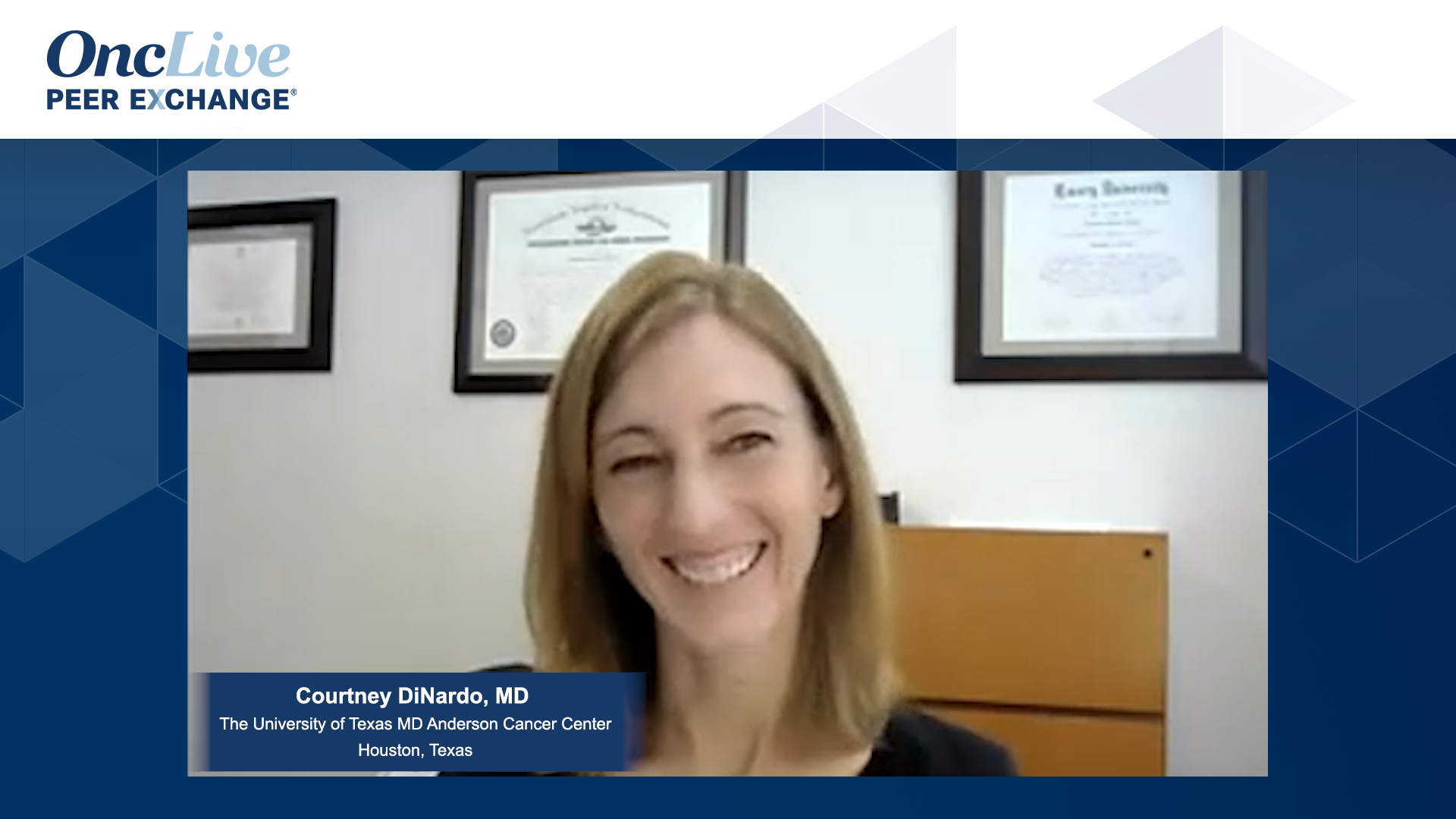- Advertise
- About OncLive
- Editorial Board
- MJH Life Sciences brands
- Contact Us
- Privacy
- Terms & Conditions
- Do Not Sell My Information
2 Clarke Drive
Suite 100
Cranbury, NJ 08512
© 2025 MJH Life Sciences™ and OncLive - Clinical Oncology News, Cancer Expert Insights. All rights reserved.
Final Thoughts on New Developments and Emerging Agents
Panelists conclude by reviewing possible advancements on the horizon in AML such as the potential emergence of Menin inhibitors and bispecific T-cell engagers as well as improved methods for predicting response and preventing relapse.
Harry Erba, MD, PhD: This has been fun. Thanks to all of you for this rich and informative discussion. Before we conclude, I’d like to get final thoughts from each of you on exciting new developments and emerging agents. I’m going to start with Courtney.
Courtney DiNardo, MD: One thing we didn’t mention is 1 of the things I’m most looking forward to: updates on the Menin inhibitors. There are many new Menin inhibitors that were initially designed for KMT2A MLL [mixed-lineage leukemia]–rearranged leukemias at 11q23 but may have activity in NPM1-mutated disease and other biomarkers instead of some early data from Syndax [Pharmaceuticals] and Kura [Oncology] are being presented, and it just looks like a new class of potentially effective therapies. I’m definitely looking toward more data there.
Harry Erba, MD, PhD: Agreed. Vinod?
Vinod Pullarkat, MD: We’re in this situation in which we have many drugs and we’re still figuring out the right combinations, so it’s very exciting. The drug approvals have moved ahead, but the data are still lagging. As we explore more triplet combinations, that’s going to make a huge impact for the older patients where, as we discussed, they can proceed to a transplant with a curative intent. The major impact of all this has been more patients getting to transplant, and with the development of MRD [minimal residual disease] technology and treatment that uses MRD, we’re able to take them to transplant in a better situation. That can potentially improve their outcome. We still need to work out the best treatment for younger patients—whether 7+3 is still the standard or if younger patients also receive some of these less intense regimens. That will make a huge impact on the power of treatment.
Harry Erba, MD, PhD: Thank you. Mark?
Mark Levis, MD, PhD: I was going to mention the Menin inhibitors because that’s what I’m looking forward to. One intriguing thing that will be a little further along in the MRD setting is bispecific T-cell inhibitors. They don’t work very well in a new loop because they’re T cells; they don’t work very well, you’re banging the patient up, and you’re killing the T cells as readily as you’re killing the leukemia. I want to see if you put the patient in a remission that’s shallow—just as we did with blinatumomab—if you can come in with a bispecific T-cell engager against an AML [acute myeloid leukemia] target. There will probably be several to choose from, and there are agents in development. In this MRD setting, they’re going to have an impact.
Harry Erba, MD, PhD: I agree. I like that idea of the immunotherapy supplementing what we could do with chemotherapy and targeted therapies. Dan?
Dan Pollyea, MD, MS: One thing that strikes me is just how humbled I am to face relapsed disease, and how difficult and challenging that remains. I’m hopeful that that will be a better-solved problem. For the time being, my focus is on what we can do to prevent that from happening. How can we optimize our up-front treatment strategies to prevent relapse? Through the lens of venetoclax, that means understanding who’s unlikely to respond a priori and treating them differently. Then we can also predict who those patients are who are going to respond and then relapse and how we can intervene—maybe that’s through MRD, maybe that’s by employing some of these target therapies. How can we intervene to prevent a relapse? That’s what I’m most hopeful to be thinking about in the near future.
Harry Erba, MD, PhD: Thanks, Dan. Everything has changed in the last 4 to 5 years, first with midostaurin and then with a flurry of other drugs. As our listeners and our audience can see, we’re all still struggling with how best to use these agents to get the best outcomes with the least toxicity for our patients with AML. I encourage those of you who are still seeing just a minority of your clinic patients or hospital patients with leukemia to reach out to people who have experience with these drugs to help manage patients with acute myeloid leukemia. It’s been amazing what’s happened. The therapeutic algorithm I grew up with, in terms of treatment, has completely and totally changed, and it’s changing before our eyes, truly for the better.
Thank you again to our viewing audience. We hope you found this OncLive® Peer Exchange® discussion to be useful and informative.
Transcript Edited for Clarity


